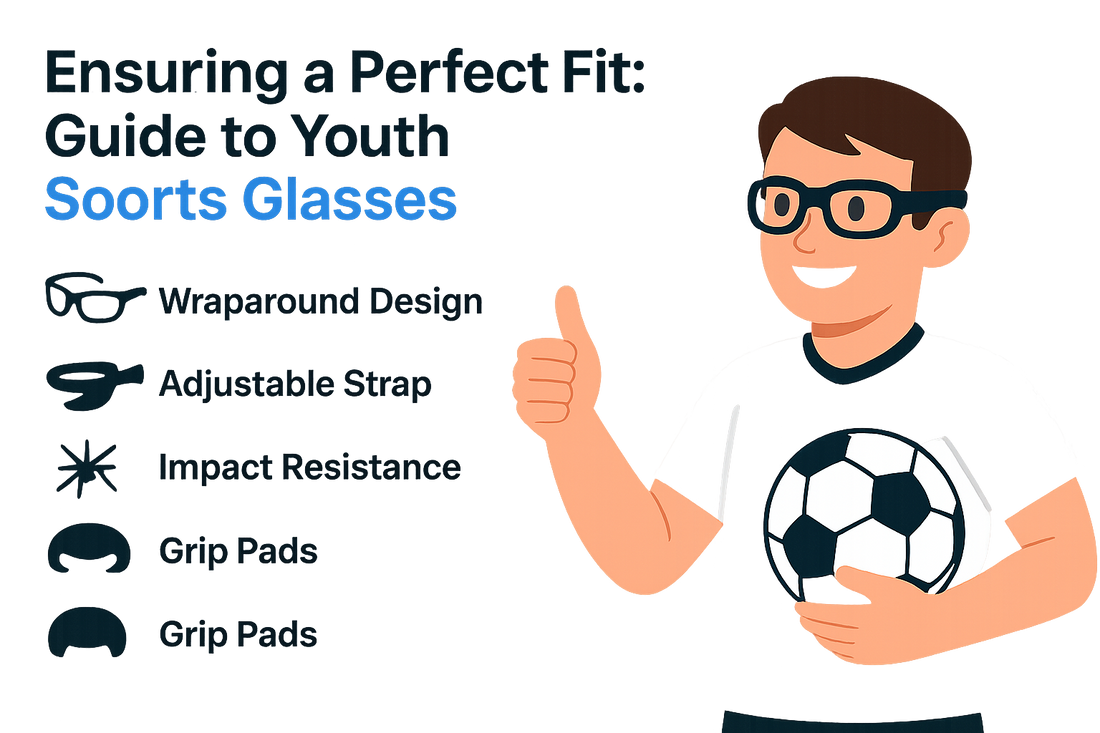
Ensuring a Perfect Fit: Guide to Youth Sports Glasses
When your young athlete is sprinting, pivoting, and diving for the ball, the right eyewear can be the difference between a great play and a missed moment. Properly fitted youth sports glasses boost confidence, sharpen vision, and help keep little eyes protected. This parent-friendly guide breaks down smart sizing, key features, and quick checks so you can get that glove-like fit.
Why fit matters for youth sports glasses
Fit impacts everything—safety, stability, and visual clarity. Frames that are too loose slide at the worst times, while frames that are too tight create pressure points and distractions. A dialed-in fit keeps lenses positioned correctly for crisp focus and faster reaction time. Because kids grow fast, start with accurate measurements and choose frames designed for movement, sweat, and changing conditions.
Measure once, play all season: how to size
You can get reliable sizing at home with a soft tape and a mirror. Jot these numbers down before you shop:
- Bridge width: Measure across the nose where the glasses rest. Low bridges benefit from adjustable or contoured nose pads.
- Lens width and height: Measure the lens area and choose lenses tall enough to keep eyes centered through head movement.
- Temple length: Measure from hinge to just behind the ear. Look for flexible temples or strap-ready ends for a secure wrap.
- Head width: Measure temple to temple across the forehead. Frames should match this width to avoid pinching or sliding.
- Pupillary distance (PD): For prescriptions, measure center-to-center between pupils to align the optical center.
Frame features that help glasses stay put
- Impact-resistant build: Lightweight, durable polycarbonate lenses and flexible TR90 frames handle bumps and falls.
- Rubberized contact points: Grippy nose pads and temple tips prevent slipping when sweat kicks in.
- Sport strap compatibility: An adjustable head strap adds stability for high-movement sports or under helmets.
- Wraparound shape: A modest curve boosts peripheral coverage and helps the frame sit securely.
Lenses for clarity and confidence
- Impact resistance: Polycarbonate or Trivex offers excellent durability at low weight—ideal for active kids.
- Anti-fog and scratch coatings: Cut fog during intense play and keep vision clearer for longer.
- UV protection: Full UVA/UVB defense is a must for outdoor sports.
- Tint tips: Gray for bright sun, amber for overcast and depth perception, green for balanced contrast; photochromic for changing light.
Comfort checks: the 60-second fit test
- Ask your child to look up, down, and side to side. The frame shouldn’t bump lashes or slide down the nose.
- Have them jog in place and nod. If the glasses move more than a few millimeters, tighten the strap or consider a smaller size.
- Check for red marks behind the ears or on the bridge after a few minutes. Light impressions are normal; pain means it’s too tight.
- Confirm the eyes are centered in the lenses. Misalignment can cause blur or headaches.
Care and quick adjustments
- Rinse dust with lukewarm water, then clean with a microfiber cloth. Avoid hot water or harsh chemicals.
- Store in a hard case between practices to protect shape and coatings.
- Recheck strap tension before each game. Replace worn nose pads or straps to maintain a secure fit.
When to size up or down
- Frequent sliding—even with a strap—suggests the frame is too wide.
- Persistent pressure marks or tightness calls for a different fit or size.
- Headaches or eye strain can signal misaligned lenses; recheck PD and alignment, especially after growth spurts.
Looking for the right eyewear? Top picks
Ready to shop? Here are popular youth sports eyewear options mentioned in this guide:
- Steph Kids Sports Glasses in Black and Blue
- Winner Kids Sports Glasses in Black
- Lebron Kids (White W/Blue Mirror Sunglasses)
Quick FAQs
How do I measure my child?
Use a soft tape to note bridge width, lens width/height, temple length, head width, and PD for prescriptions. Compare to the frame’s size chart.
What lens material is best?
Polycarbonate or Trivex balances impact resistance, clarity, and weight for sports.
Can they fit under a helmet?
Yes—choose low-profile frames with rubberized temples and a strap, and test with the actual helmet for pressure points.
Do prescription lenses work in sports frames?
Most do. Ensure PD and lens center are set correctly for clear, comfortable vision.



